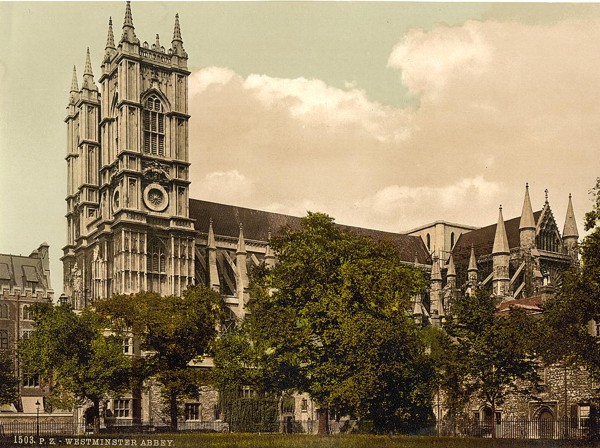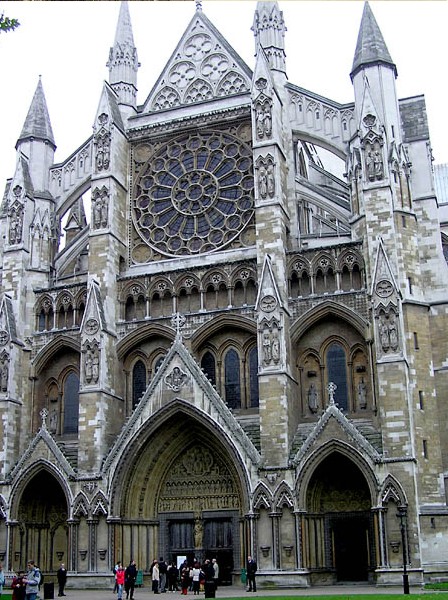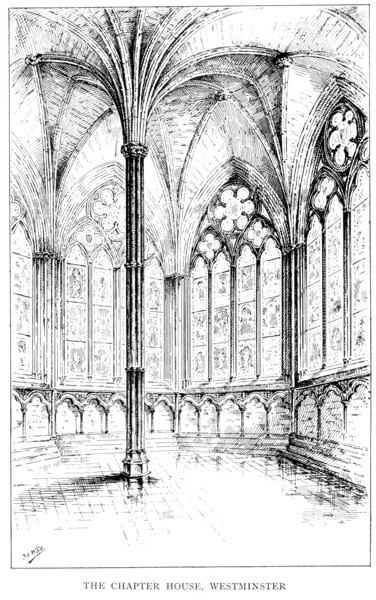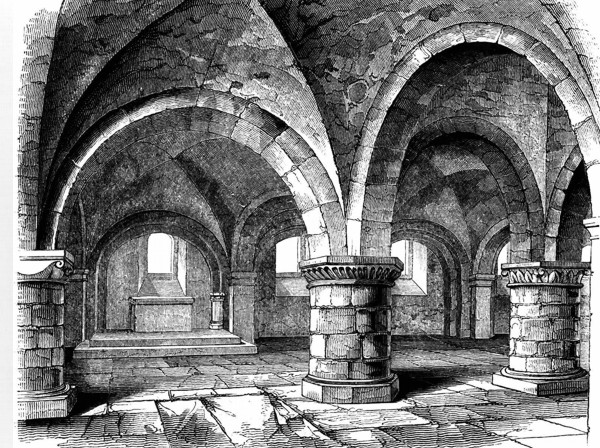Order: Benedictine.
Location: London, England.
Built on what had originally been the Isle of Bramble or Thorney
Island.
Founded: Probably, the
first church built on Thorney Island was Saxon, built by a Saxon
King. possibly Sebert,
early in the seventh century. As Thorney island was located just
above London, the church
there remained important and subsequent rulers rebuilt and improved the
church and monastery
lands over the centuries. By at least 785 CE the
church was called west
'minster,' and so must have included a monastery of some type. It
is also likely that St. Dunstan, with the support of the Anglo-Saxon
King Edgar,
brought 12 monks from Glastonbury to Westminster in 960 CE.
With royal support,
including from Edward the Confessor,
serious construction of Westminster as a Norman Church began in
1011. Edward was enshrined at the abbey after his death.
Reconstruction came again
in the twelfth century, this time under the
rule of Henry III. It was a time of tremendous resurgence for
monastic interest and patronage, and Henry III's masons and
craftsworkers
began the work that transformed Westminster to an architectual
masterpiece in the Gothic
style.
Short
History: Westminster Abbey has long enjoyed royal
patronage. It is, in fact, a magnificent crypt, housing the
remains of countless
Kings, Queens, Princes, Princessess, and members
of the peerage. Henry III's reconstruction begun in the twelfth
century took many centuries to complete.
Hampering construction efforts was the havoc caused by the Black Death,
funds shortages, and
a disastrous fire. The Abbey did not attain its western towers
until the eighteenth century,
and a central tower is still lacking. At the Dissolution, the
remaining monks at Westminster were
dismissed and replaced with twelve members of the Anglican
clergy. These clerics received a stipend from the revenue of the
church, called
a prebend. The last Abbot, known as William Boston, became the
first Dean and
thereafter he became known as William Benson.
Westminster continues as a vibrant center of English worship, and royal
pomp and patronage. Every English monarch since Harold has been
coronated at Westminster.
Of
Interest: Though
magnificent, Westminster Abbey operated as a normal church and
monastery in its day. The
charter for the monastic life included the strict admonition that
monastics provide works and services of charity and uplift the word of
God.
As such, and as any other
Abbey at the time, Westminster was the site of pilgrimage, provided
sanctuary, provided for the poor, shepherded the masterless, and had a
hospital
that housed the sick, including
lepers.
Famous for: Westminster
is famous for its long
association with the British royalty. It is also famous for the
special
"stone of scone" which has been associated with royal rank and
entitlement. Supposedly, this stone is exactly alike to the stone
on which Jacob rested his
head at Bethel. Edward I took the stone from the Scottish Kings,
who themselves had taken it from the Sacred Hill of Tara in
Ireland. The stone came
to Ireland from the Kings of Spain
who had received it received it from the sons of Jacob who brought it
into Egypt.
Westminster
Abbey Links:
|












